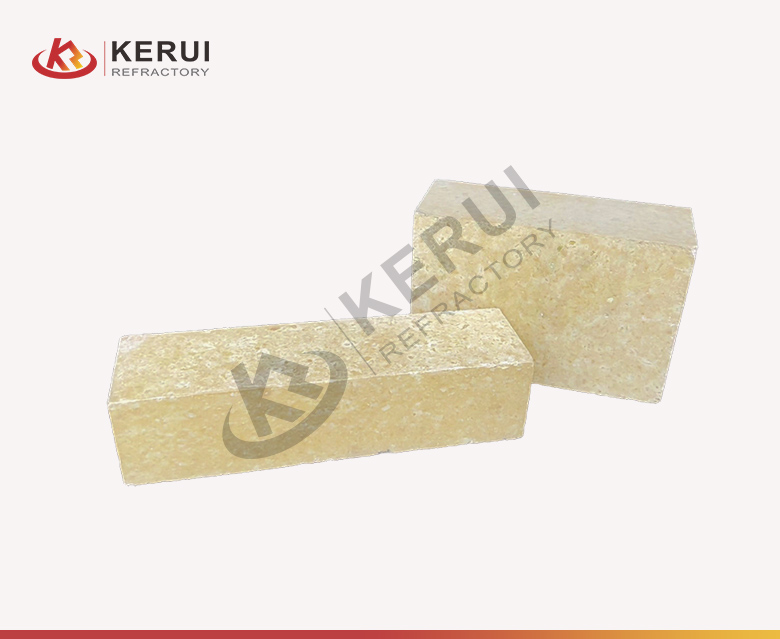10
0
0
Corundum Mullite Brick vs Magnesia Chrome Brick: A Comparative Analysis
In the realm of high-temperature applications, refractory bricks play a crucial role in lining furnaces, kilns, and other industrial equipment. Among the diverse array of refractory bricks, corundum mullite bricks and magnesia-chrome bricks stand out as prominent choices owing to their exceptional properties and versatility. However, selecting the most suitable brick for a specific application requires a thorough understanding of their distinct characteristics and suitability for various conditions.

Corundum Mullite Bricks: A Composition of Strength and Versatility
Corundum mullite brick, also known as CM bricks, are composed primarily of corundum (α-Al2O3) and mullite (3Al2O3·2SiO2), minerals renowned for their exceptional strength and resistance to high temperatures. The high alumina content in corundum mullite bricks imparts remarkable refractoriness, enabling them to withstand temperatures exceeding 1750°C (3182°F) without melting or deforming.
Key Properties of Corundum Mullite Bricks:
[ol]
High Refractoriness: Corundum mullite bricks exhibit exceptional resistance to high temperatures, making them suitable for applications involving extreme heat.
Excellent Thermal Shock Resistance: Their ability to withstand rapid temperature fluctuations without cracking or spalling makes them ideal for dynamic environments.
Good Chemical Resistance: The low silica content enhances their resistance to chemical attack, particularly from acids and alkalis.
High Wear Resistance: Their superior hardness and density make them well-suited for applications involving abrasion and wear.
[/ol]
Applications of Corundum Mullite Bricks:
[ol]
Glass Furnaces: The high refractoriness and chemical resistance of corundum mullite bricks make them ideal for lining glass furnaces.
Cement Kilns: Their ability to withstand extreme temperatures and thermal shock makes them suitable for cement kiln linings.
Incinerators: The high wear resistance and chemical resistance of corundum mullite bricks make them effective for incinerator linings.
Petrochemical Industry: Their versatility and durability make them valuable in various petrochemical processes.
[/ol]
Magnesia-Chrome Bricks: A Bastion of Strength in Harsh Environments
Magnesia-chrome bricks, also known as MK bricks, are primarily composed of magnesia (MgO) and chrome oxide (Cr2O3), forming a formidable combination known for its exceptional resistance to chemical attack and high temperatures. The high magnesia content imparts remarkable alkaline resistance, while the presence of chrome oxide enhances strength and slag resistance.
Key Properties of Magnesia-Chrome Bricks:
[ol]
Superior Alkaline Resistance: Their high magnesia content makes them highly resistant to attack from alkalis, such as soda and potash.
High Strength and Slag Resistance: The presence of chrome oxide enhances their strength and resistance to molten slags.
Good Thermal Shock Resistance: They exhibit reasonable thermal shock resistance, enabling them to withstand moderate temperature fluctuations.
[/ol]
Applications of Magnesia-Chrome Bricks:
[ol]
Steel Furnaces: The alkaline resistance and slag resistance of magnesia-chrome bricks make them ideal for lining steel furnaces.
Glass Furnaces: Their ability to withstand high temperatures and chemical attack makes them suitable for certain glass furnace applications.
Cement Kilns: The high strength and slag resistance of magnesia-chrome bricks make them effective for lining cement kiln burning zones.
Non-Ferrous Metal Smelting: Their alkaline resistance and slag resistance make them valuable in non-ferrous metal smelting processes.
[/ol]

Comparative Analysis: Corundum Mullite Bricks vs Magnesia-Chrome Bricks
Selection Criteria:
Choosing between corundum mullite bricks and magnesia-chrome bricks depends on the specific application and environmental factors:

Corundum Mullite Bricks: A Composition of Strength and Versatility
Corundum mullite brick, also known as CM bricks, are composed primarily of corundum (α-Al2O3) and mullite (3Al2O3·2SiO2), minerals renowned for their exceptional strength and resistance to high temperatures. The high alumina content in corundum mullite bricks imparts remarkable refractoriness, enabling them to withstand temperatures exceeding 1750°C (3182°F) without melting or deforming.
Key Properties of Corundum Mullite Bricks:
[ol]
[/ol]
Applications of Corundum Mullite Bricks:
[ol]
[/ol]
Magnesia-Chrome Bricks: A Bastion of Strength in Harsh Environments
Magnesia-chrome bricks, also known as MK bricks, are primarily composed of magnesia (MgO) and chrome oxide (Cr2O3), forming a formidable combination known for its exceptional resistance to chemical attack and high temperatures. The high magnesia content imparts remarkable alkaline resistance, while the presence of chrome oxide enhances strength and slag resistance.
Key Properties of Magnesia-Chrome Bricks:
[ol]
[/ol]
Applications of Magnesia-Chrome Bricks:
[ol]
[/ol]

Comparative Analysis: Corundum Mullite Bricks vs Magnesia-Chrome Bricks
| Refractoriness | High | High |
| Thermal Shock Resistance | Excellent | Good |
| Chemical Resistance | Good (Acid and Alkali) | Superior (Alkaline) |
| Wear Resistance | High | Moderate |
| Applications | Glass furnaces, cement kilns, incinerators, petrochemical industry | Steel furnaces, glass furnaces (specific applications), cement kilns, non-ferrous metal smelting |
Selection Criteria:
Choosing between corundum mullite bricks and magnesia-chrome bricks depends on the specific application and environmental factors:
- Temperature: For applications involving extreme temperatures, corundum mullite bricks are preferred due to their higher refractoriness.
- Chemical Environment: In alkaline environments, magnesia-chrome bricks excel due to their superior alkaline resistance.
- Thermal Shock: For applications with rapid temperature fluctuations, corundum mullite bricks offer better thermal shock resistance.
- Wear Resistance: In applications involving abrasion or wear, corundum